Layer
2025 ※ Product design

Enabling off-chain compute
"Actively Verified Services" (AVSs) are a cutting-edge blockchain technology which utilizes "re-staking" to power new types of applications.
The primarily bottleneck for blockchain adoption is the lack of use-cases; AVSs provide a potential path to actual mainstream adoption, by allowing users to interact with truly decentralized applications (via the re-staking protocol).
However, the core problem they currently face is that building an AVS is extraordinarily difficult. Although protocols allow, AVS builders must write extremely complex code, and manage complex coordination between operators (who run + validate the actual software computation).
This is where Layer comes in—founded by Jake Hartnell (CEO), Ethan Frey (CTO), and Sam Cassatt (CBO), Layer is building WAVS—a WASM-powered framework for building AVSs. Funded by a16z and backed by the leading technology in the space, Eigenlayer (led by Sreeram Kannan, an affiliate professor at the University of Washington), WAVS makes it extremely easy to build AVSs in as little as 400 lines of code. Because it uses WebAssembly (WASM) code, it is extremely performant and can run anywhere, which makes it far easier to coordinate updates with operators.
A prototype demonstrating an AVS use-case
Early product exploration
I was the first hire to Layer's product team (pre-seed), and was responsible for early product exploration. Early product exploration involved a wide spread of potential use-cases for WAVS. I helped narrow our focus into several key user-groups, conducted (light) user research to uncover their needs, and laid a blueprint for how those end-users would interface with AVSs once WAVS was fleshed out.
Using these product maps, I designed a comprehensive UI that would flexibly address these needs/features.
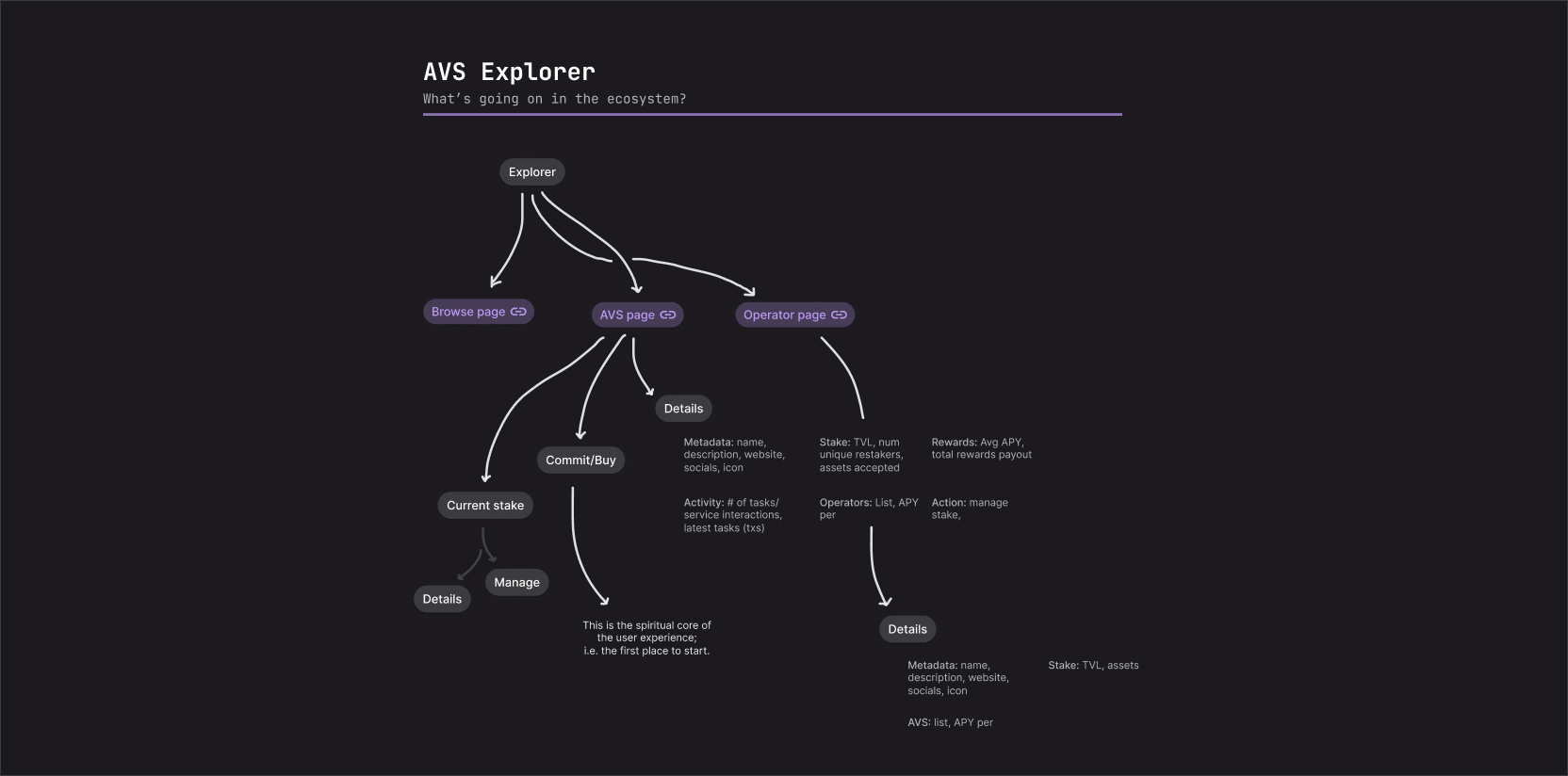
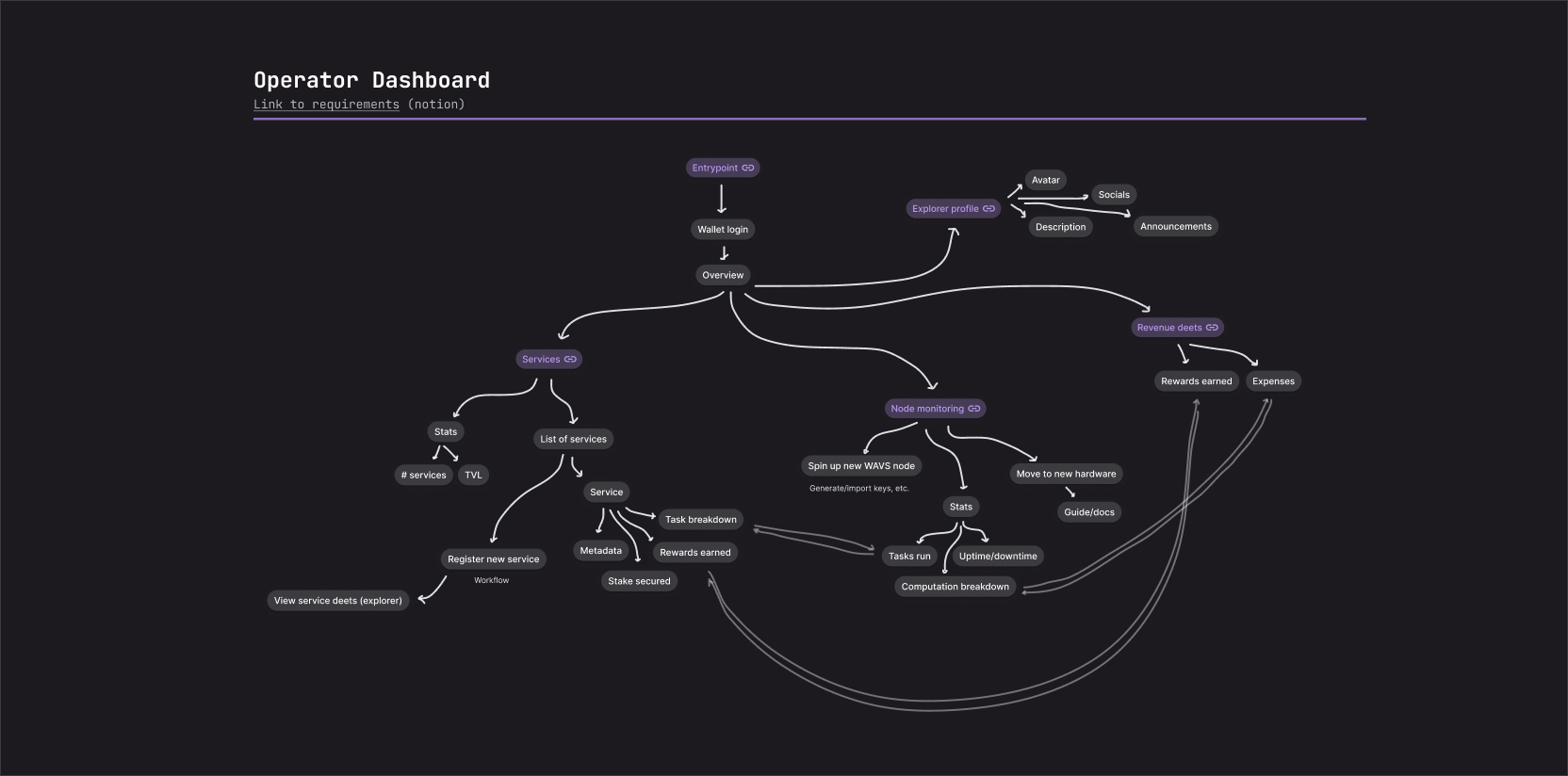
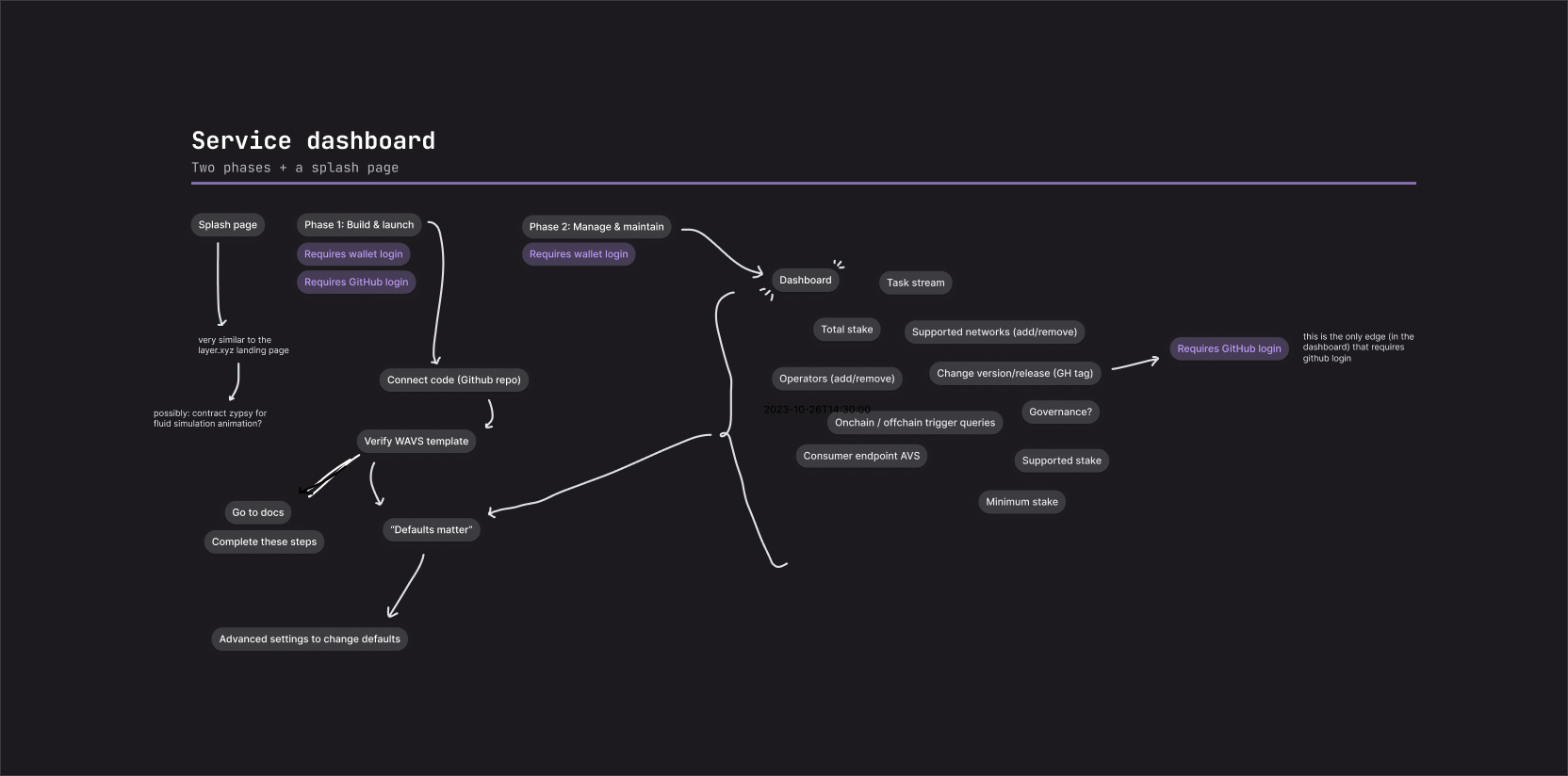
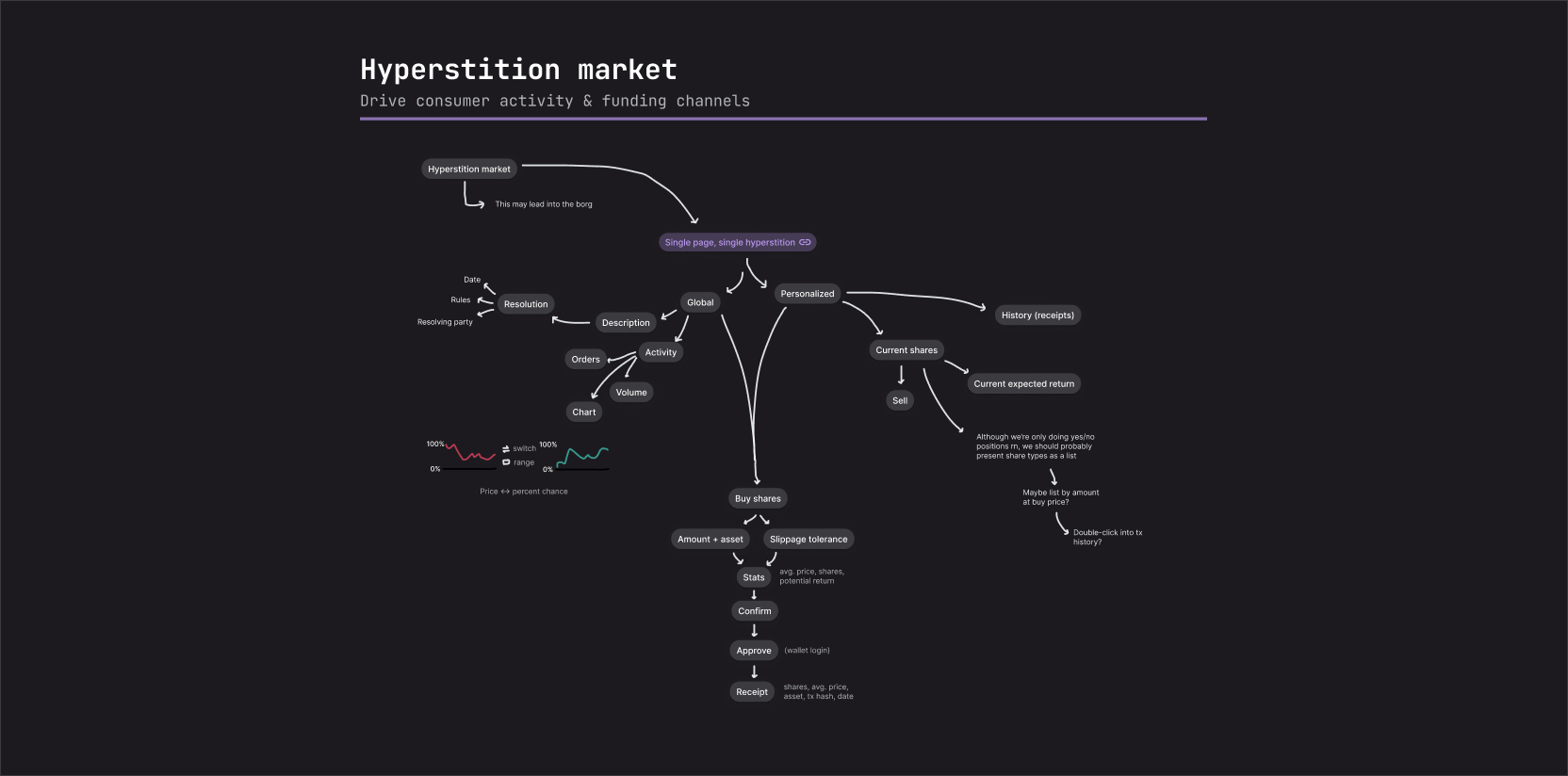

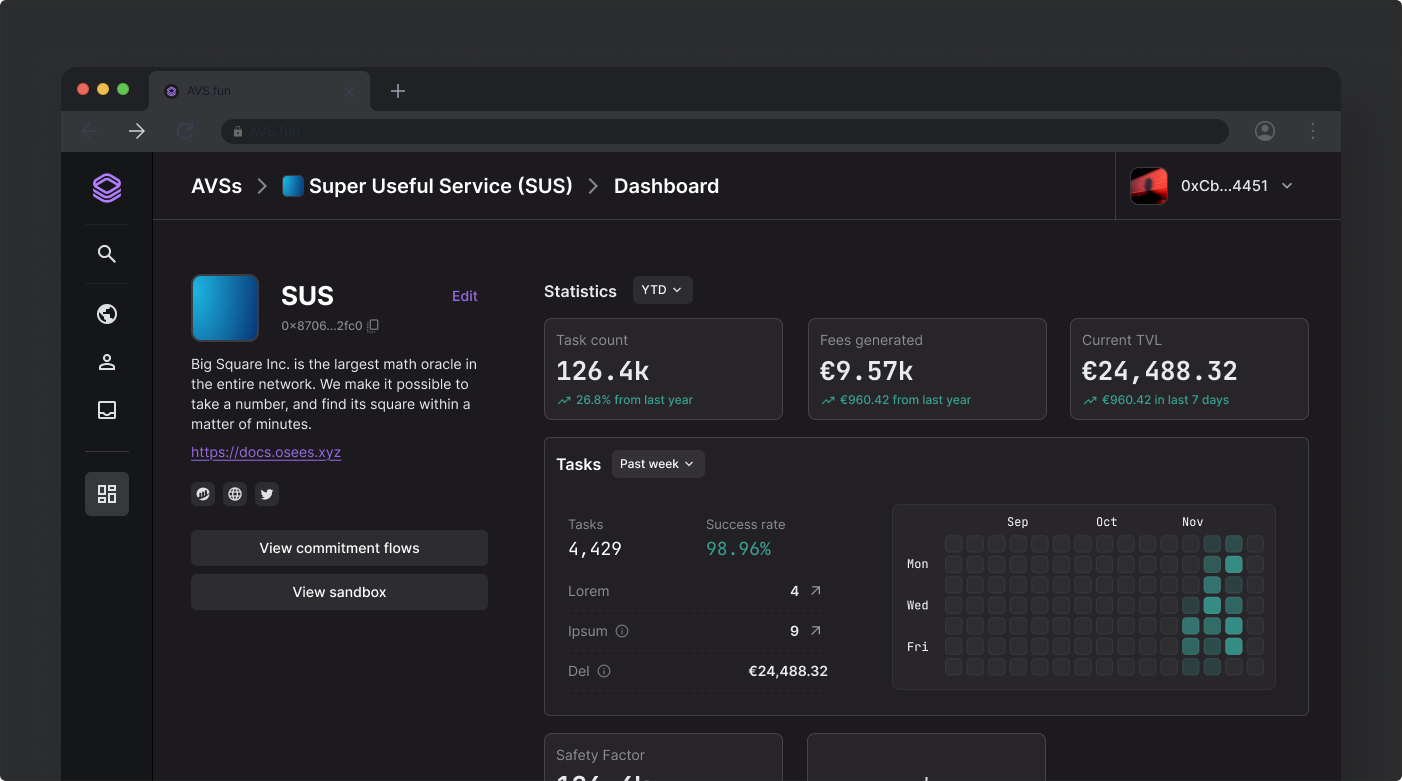
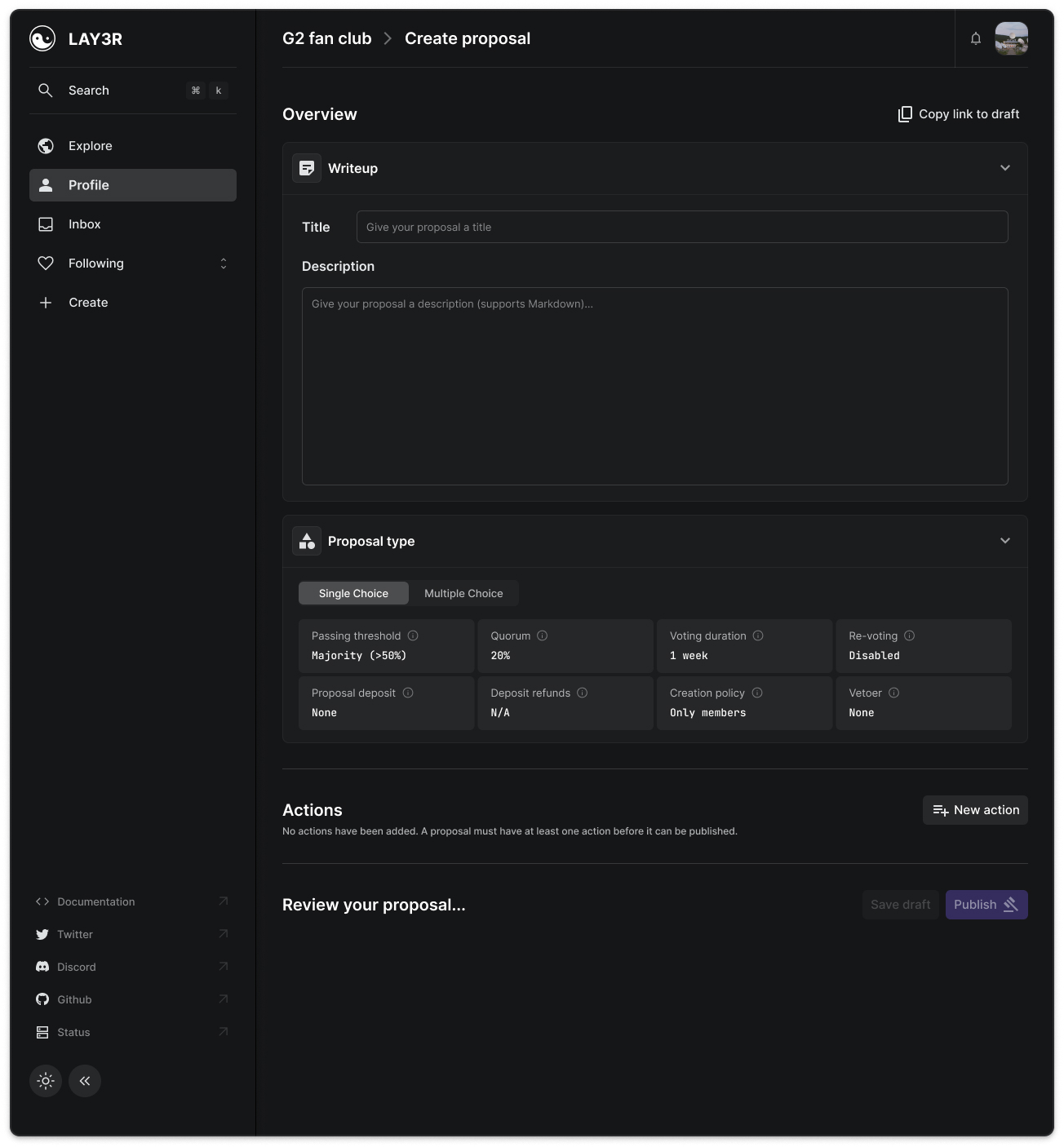
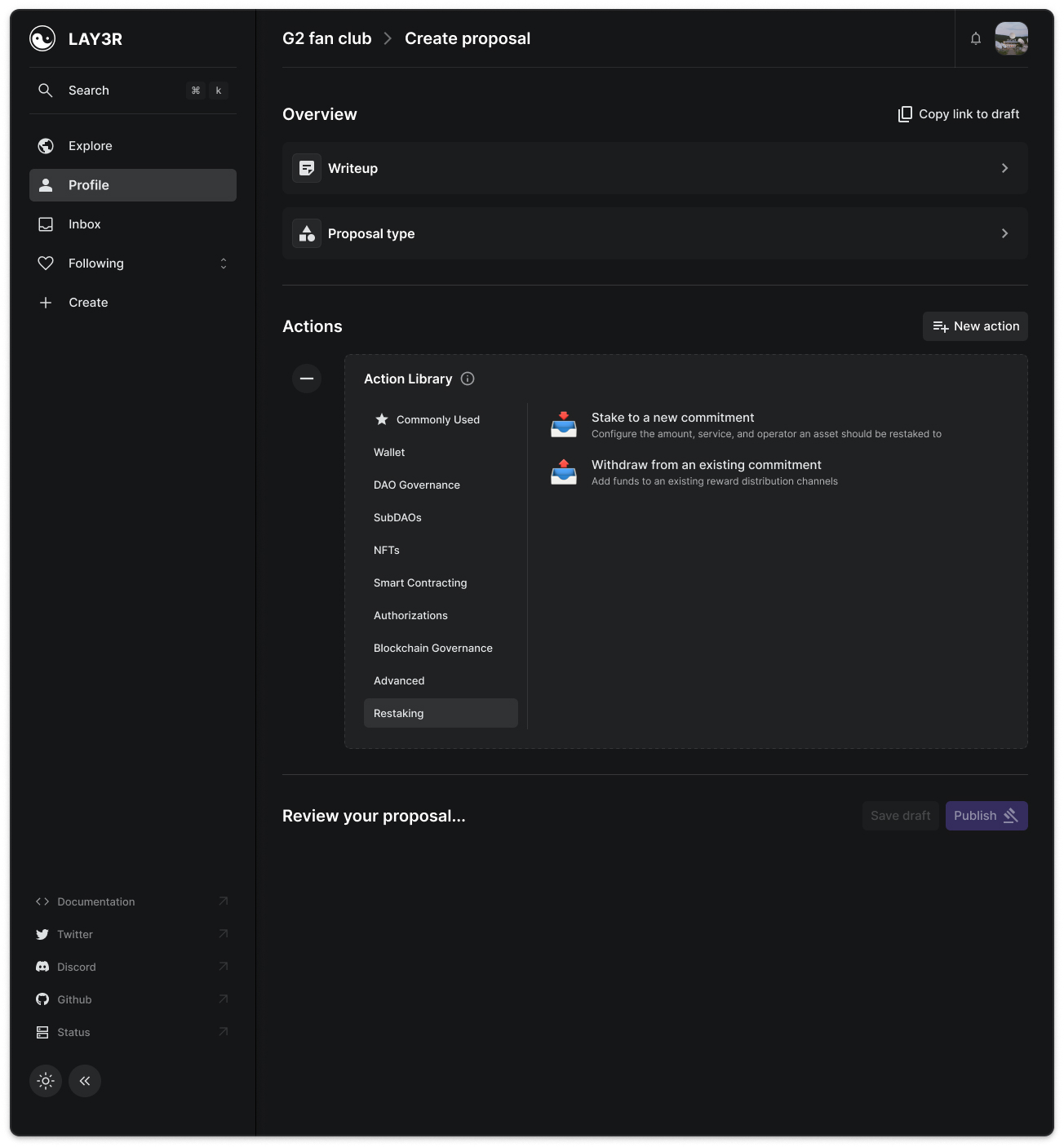
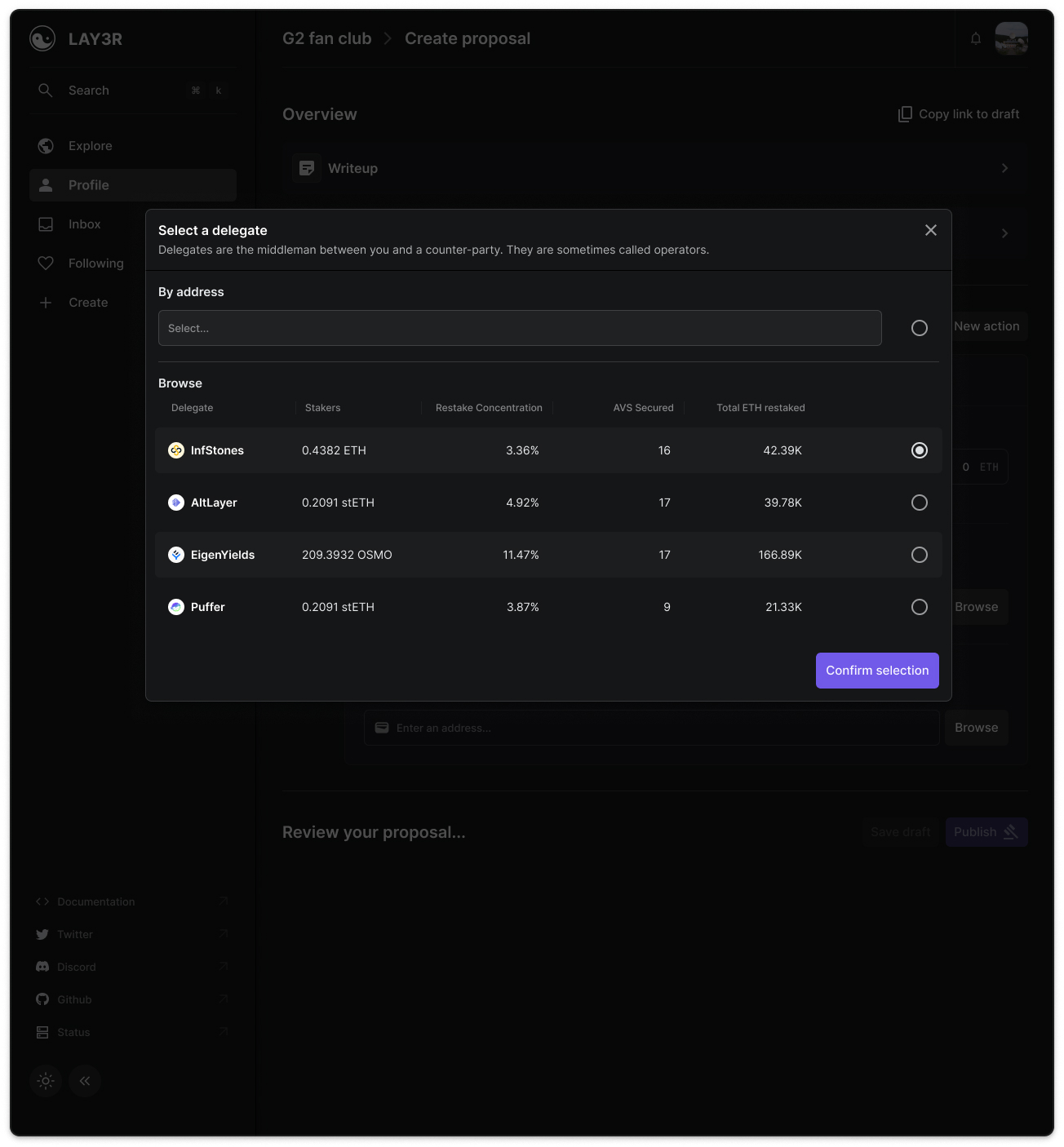
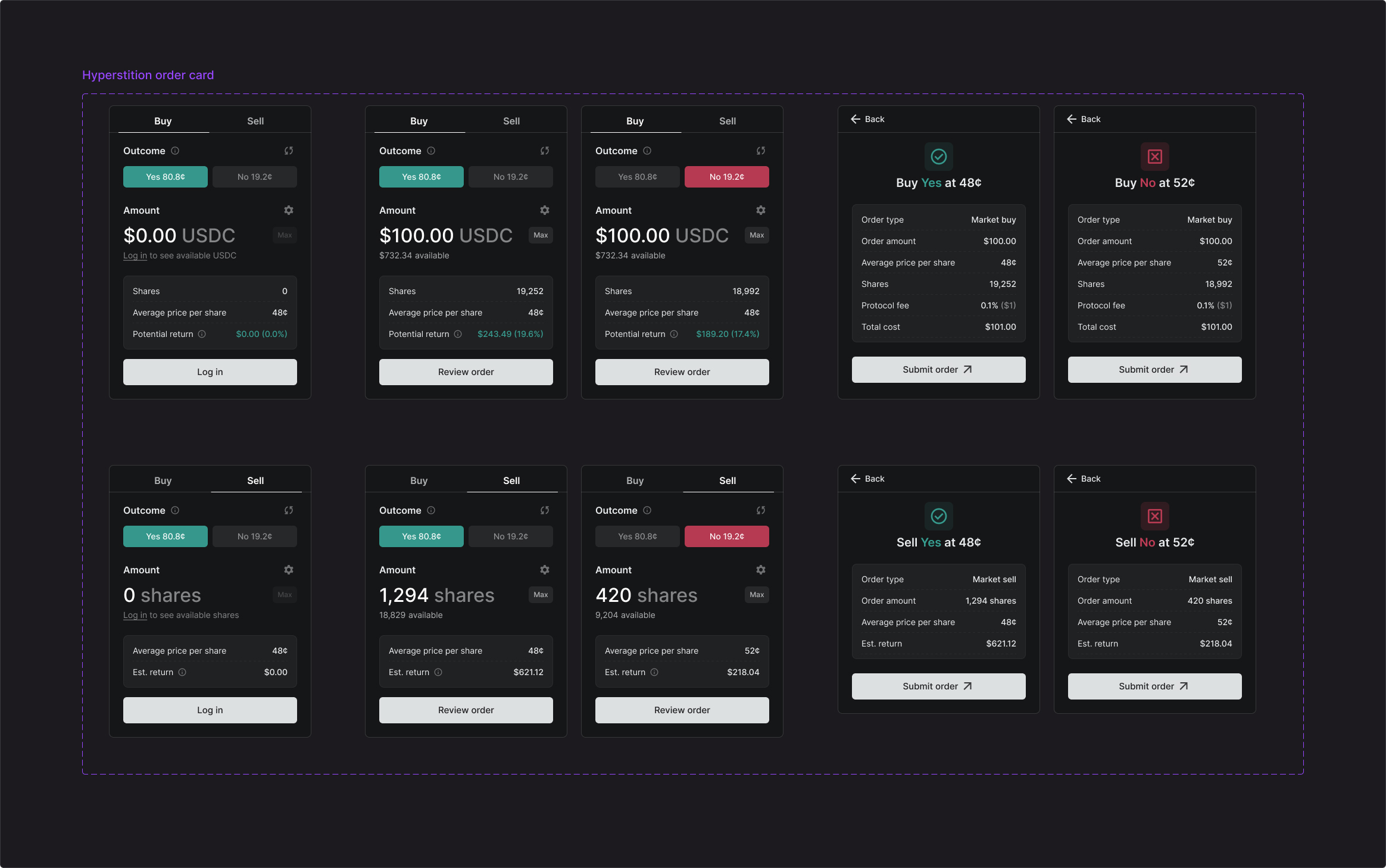
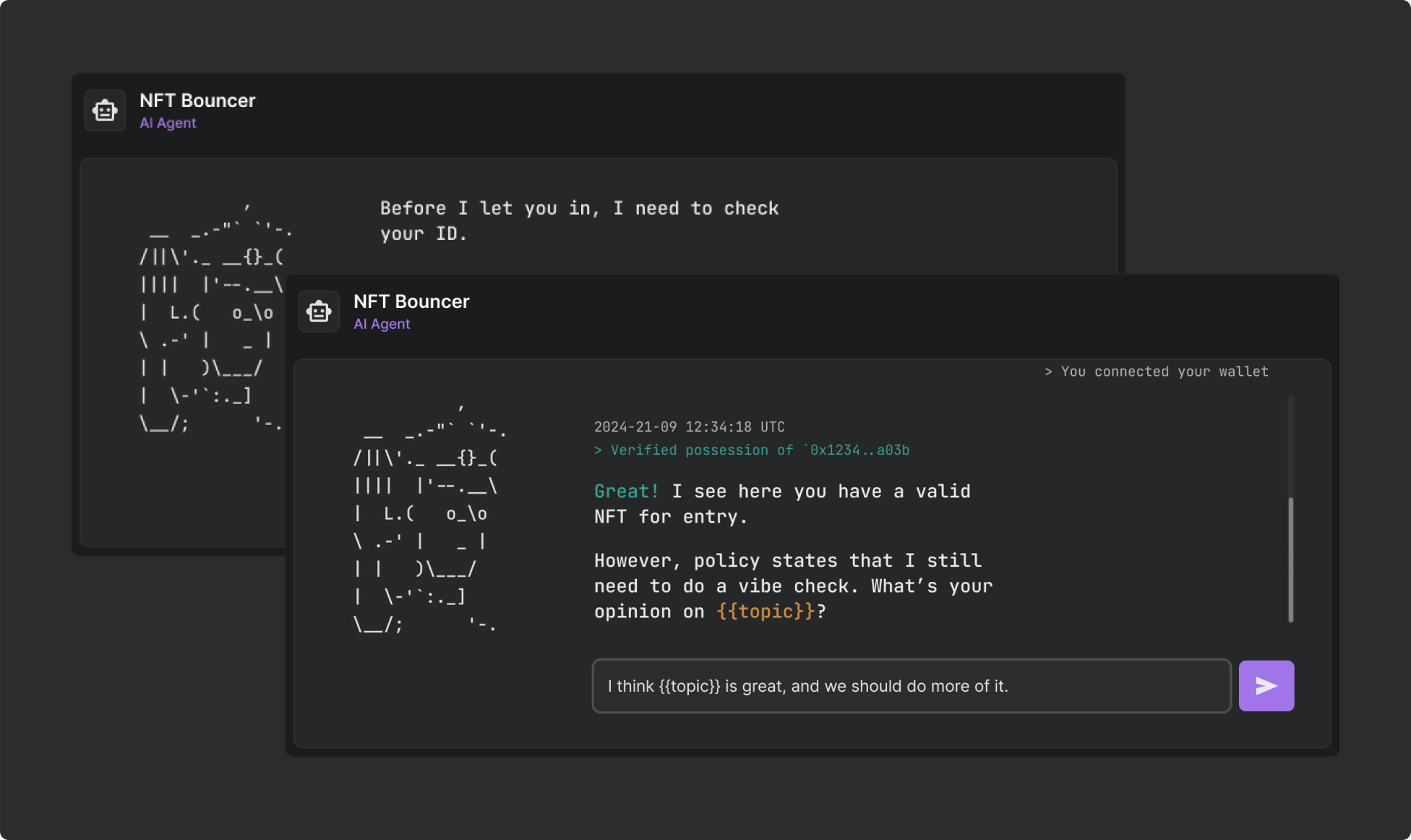
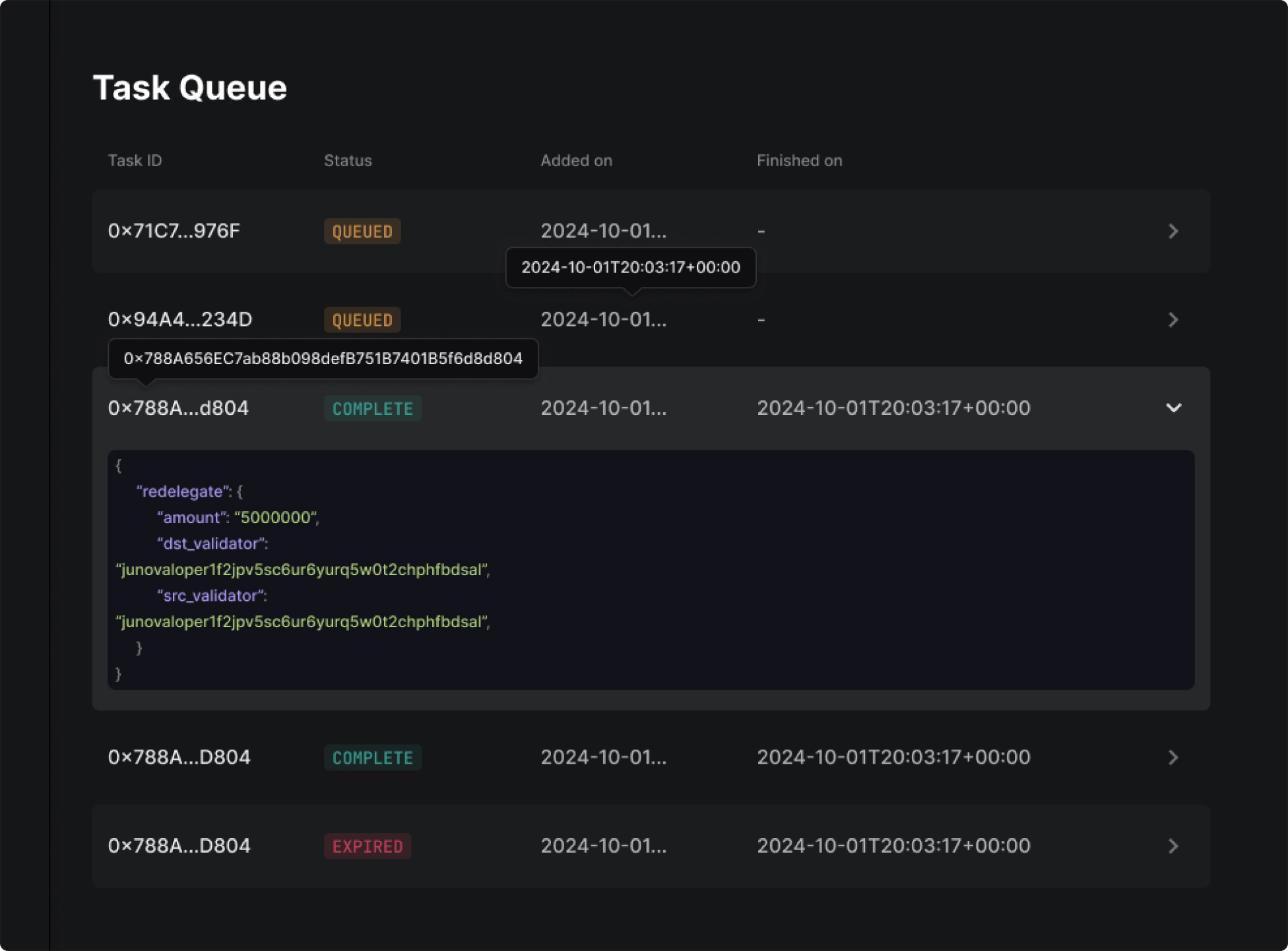
I spent quite a bit of time developing our Series A pitch, and contributed extensively to content, flow, and imagery. Leadership flew me out to both Puerto Rico and France to flesh it out, which ended up being tremendously successful.
As someone who was extremely new to crypto, I had to learn a lot in a short amount of time. But with my experience in the consumer market, I was very good at bringing a layman's perspective to our messaging. Through many conversations with our engineers, I developed a strong understanding of our tech stack in a way that could be communicated rapidly to people unfamiliar with the jargon.
This is where I helped us focus our value prop into the cascading effects of supporting easier development—which happened to influence product-direction, too.
My contract ended with Layer before I had the chance to see my blueprints come to life. The reality is that the company did not yet have the bandwidth to implement end-user products. This is because, as Layer honed its focus going into Series A, it naturally pivoted all its energy into engineering. That being said, I believe my work was quite solid, and will useful far into the future.
Although I'm not particularly in entering the blockchain space again, I am fortunate that I was exposed to it. Blockchain has a bad rep in the greater world for good reason, but there is an incredible amount of merit to the philosophy of decentralized finance. At Layer (and its sister org, DAO DAO), I found myself in a small pocket of crypto folks who actually wanted the change the world for good. Understanding the decentralized philosophy is, currently, extremely inaccessible due to the extremely complex technology that enables it. But after being forced to learn a lot, very quickly, I'm proud that I got to contribute to an org that I believe is making a true step forward to a decentralized future.
More relevant to my personal development, I learned a ton about getting buy-in. As a designer, I've learned that talking about bad ideas can be very good at producing great ideas. But the culture at Layer was not very talkative at all, and without people to engage in my ideation, much of my vocal contribution ended up being distracting noise. This made it much harder to advocate for truly good ideas, and I think my failure here is one of the reasons Layer pivoted to servicing engineers, rather than end-users. (They probably would've done that anyway, but the point is—I didn't get buy-in). I share this here because we learn from failure. And since going through this experience, I've become much better at being more intentional with the ideas I vocalize to people.